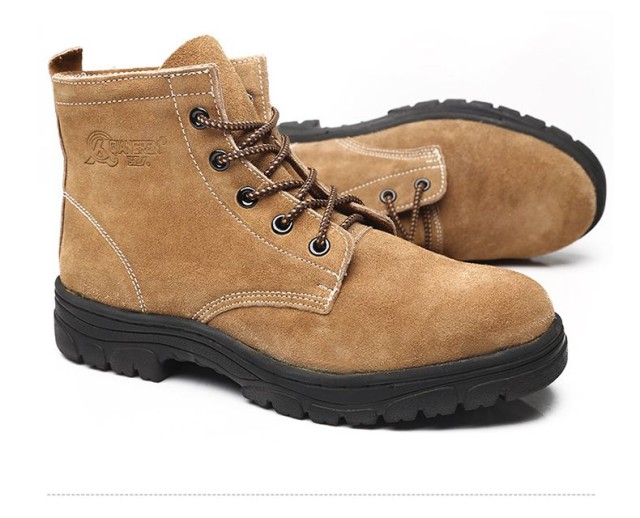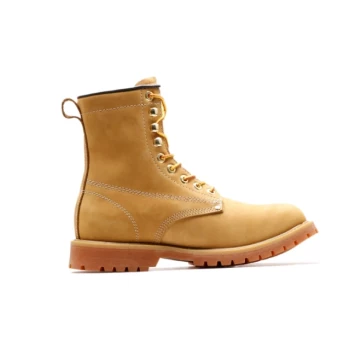When workplace safety depends on footwear, oil-resistant boots aren’t just an option—they’re a necessity. From chemical degradation risks to OSHA compliance, this guide breaks down what makes these boots indispensable across industries and how to choose the right pair.
Why Industries Demand Oil-Resistant Footwear
Hidden Risks in High-Risk Environments
Oil-resistant boots do more than prevent slips. They shield workers from:
- Chemical burns: Petroleum products and industrial solvents can degrade standard materials, exposing feet to corrosive substances.
- Thermal hazards: Hot oil penetration can cause severe burns if boots lack heat-resistant barriers.
- Toxic vapor release: Certain oils release harmful gases when contacting non-resistant materials.
Research shows that workplaces with oil exposure see a significant reduction in foot injuries when proper footwear is mandated.
Beyond Oil & Gas: Overlooked Sectors Needing Protection
While oilfields and automotive plants are obvious candidates, these industries also require oil-resistant boots:
- Food processing: Animal fats and industrial oils used in machinery demand slip- and chemical-resistant footwear.
- Waste management: Workers handling recycled oils or chemical waste need protection from leaks.
- Manufacturing: Heavy machinery maintenance often involves lubricants that degrade standard boots.
A case study in the automotive sector revealed a 40% drop in foot-related injuries after switching to ASTM-compliant oil-resistant boots.
What Defines Truly Oil-Resistant Work Boots
Material Science: Outsoles That Resist Chemical Degradation
Not all materials perform equally against oils:
- Nitrile rubber: Superior flexibility and chemical resistance, ideal for dynamic movements in rough environments.
- Polyurethane (PU): More rigid but excels in durability for urban settings with frequent oil exposure.
Proprietary blends (e.g., oil- and abrasion-resistant PU) are increasingly common for balancing grip and longevity.
Safety Certifications You Can’t Compromise On
Look for these critical standards:
- ASTM F2413: Ensures toe protection and electrical hazard resistance.
- ASTM F1671-07: Protects against blood-borne pathogens (vital for healthcare adjacent to industrial roles).
- ASTM 2413-18 EH: Secondary electrical hazard rating for added safety.
Boots without these certifications may fail under real-world conditions, putting workers at risk.
Choosing the Right Boot for Your Worksite
Balancing Durability, Comfort, and Compliance
Prioritize boots with:
- Full-grain leather uppers: Resists oil absorption while maintaining breathability.
- Waterproof membranes: Keeps feet dry in wet/oily conditions (e.g., Thinsulate™ linings).
- Ergonomic design: Padded collars and cushioned insoles reduce fatigue during long shifts.
A common mistake is prioritizing price over features—boots that skimp on materials often require replacement within months.
Case Study: How [Industry] Reduced Injuries by 40%
A manufacturing plant switched to oil-resistant boots with metatarsal guards and slip-resistant outsoles. Within a year:
- Slip-and-fall incidents dropped by over a third.
- Chemical burn cases became negligible.
- Worker productivity improved due to reduced discomfort.
Step Into Safety with 3515
Whether you’re a distributor supplying hazardous industries or a brand owner crafting specialized footwear, 3515’s manufacturing expertise ensures oil-resistant boots that meet rigorous standards. Our solutions combine certified protection with ergonomic design—because safety shouldn’t come at the cost of comfort.
Ready to equip your workforce with boots built for resilience? Partner with 3515 to customize footwear tailored to your industry’s unique demands.
Related Products
- Durable Leather Moc Toe Work Boots for Wholesale & Custom Manufacturing
- Durable Moc-Toe Wedge Work Boots | Wholesale Manufacturing for Brands
- Wholesale Safety Footwear Manufacturer for Bulk & Custom OEM Orders
- Customizable Anti-Smash Safety Boots for Wholesale & Private Label Manufacturing
- Durable Moc Toe Wedge Sole Work Boots for Wholesale and Private Label
Related Articles
- How Slip-Resistant Boot Testing Saves Lives: The Science Behind Workplace Safety
- How Slip-Resistant Work Boots Prevent Industry-Specific Injuries and Compliance Risks
- Moc Toe Safety Boots: When Style Meets Workplace Protection
- How Slip-Resistant Outsoles Prevent Injuries and Ensure Tactical Success
- How ASTM-Compliant Boots Prevent Workplace Injuries: A Safety Guide for Industrial Buyers




















